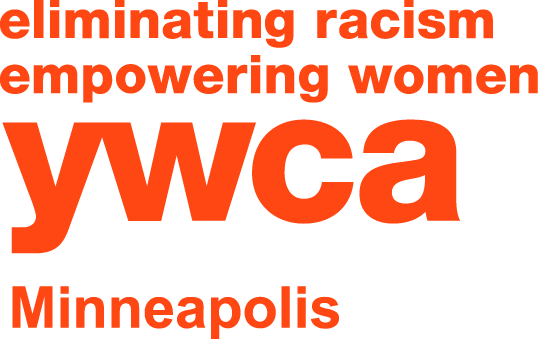Environmental Justice from an Anti-Racism Lens
As a part of our Third Thursday Lunch & Learn series, we’ve been providing space in community to convene and learn through dialogue how to plug into various social issues faced by historically marginalized communities. We have also leaned on traditions of Black artists, poets and storytellers to learn from that help us adopt new frameworks to understand systems of oppression and the ways to build collations in community. One example would be that of Black feminist writer and independent film maker, Toni Cade Bambara, particularly her short stories.One of her short stories helps us think about how to approach the work of environmental justice and how to build community power across neighborhoods. Her story "The Organizer's Wife" is one such example. In this story we are pulled into the world of a young woman named Virginia whose husband Graham has recently been arrested for his activism work surrounding environmental justice. Professor of English at Washington State University Thabiti Lewis has recently published a book on the work of Bambara and situates her work within the spiritual and intellectual traditions Bambara comes out of. In his new work, Lewis describes Graham and how Bambara’s fictional character thought of the land and ways to tackle environmental justice issues.
"The principles Graham uses to develop the spirit of the community revolve around ideas of the sacredness of the land which is home. In one scene he tells the people that the earth is:'not ...for digging in or weeping over or crawling into, but home [..] Home in the future. The future here now developing [...]Home liberated soon. And the earth would recover [..] the ancient wisdoms would be revived. The energy released Home, a human place once more.'"
Graham in many ways raises concerns that are relatable to our local and national environmental crises. We can easily heed Graham’s warning in the context of issues currently arising in our country, our more recent memory of Flint, Michigan’s ongoing water crisis. Or local communities in Jackson Mississippi as they are dealing with state failed infrastructure and attempt to hold their local officials accountable to healthy drinking water.
Looking In Our Own Backyard
We can also look in our own backyard to the local HERC incinerator located on the edge of North Minneapolis. Last year, an article was published by the Sahan Journal speaking to the local organizing that has been happening around this effort.
The HERC is a source of air pollution in Minneapolis, according to Minnesota Pollution Control Agency data. It produced 173,254 tons of carbon dioxide, 404 tons of nitrogen oxide, and 21 tons of PM2.5 — tiny particles of matter produced by crushing and burning — in 2019. While those amounts are below levels permitted by the state, activists say who experiences that pollution matters.Since its construction in 1989, environmental justice advocates have consistently criticized its location in the North Loop neighborhood, adjacent to north Minneapolis. The facility burns trash to create steam, which generates electricity sold to Xcel Energy and used to power its next-door neighbor, Target Field, and about 25,000 homes.
Learning From Story
Though Graham is a fictional character created in the mind of Toni Cade Bambara, his story can serve as a stand in for the lives of many on the ground doing organizing work at the level of the grass roots. Professor Thabiti Lewis elaborates:
"Grandma teaches people how to love and capture the principal uses of the earth, to see “the spirits under the plaster," to revere it’s true, historical and cultural values. These teachings reflect practices — love of self, family, the people (the land) which are a key component of Bambara’s spiritual wholeness message. The earth, the soil, holds the ancestral bones, the spirit of the ancestry of people; It is called “America” but has different meetings than those given in a school room."
As a part of our work convening alternative learning spaces, we also want to gather resources to serve as an information plug-in, where our community members can tap into local efforts to fight for holistic healthy ecosystems. Below are examples of a few resource materials that can assist people wanting to jump start from where they are.
Anti-Racism Environmental Justice Resources
- Anti-Racism Daily — Rally for environmental justice
- Wildseed Society
- Dream of Wild Health
- Diaspora on Madeline Island
- Bullard Center for Environmental and Climate Justice
From It's Time to Talk: Forums on Race™ Participants
- Sunrise Movement
- Rooted in The Earth: Reclaiming the African American Environmental Heritage – Dianne D. Glave
Videos
"Pollution is Segregated" Says the Father of Environmental Justice | Amanpour and Company - YouTube
A Final Word
“Well, environmental justice embraces the principle that all communities, all people, are entitled to equal protection of our environmental laws, housing laws, transportation laws, uh, civil rights laws, human rights laws, and health laws and regulations. Environmental justice basically is the treatment of all communities and all peoples, uh, equal and not somehow given less weight because the community happens to be poor or happens to be, uh, physically located on the wrong side of the tracks, or the wrong complexion for protection. Now that’s all encompassing.” — Robert Bullard
JOIN US FOR AN UPCOMING LUNCH AND LEARN EVENT LEARN MORE ABOUT YWCA RACIAL JUSTICE PROGRAMS
